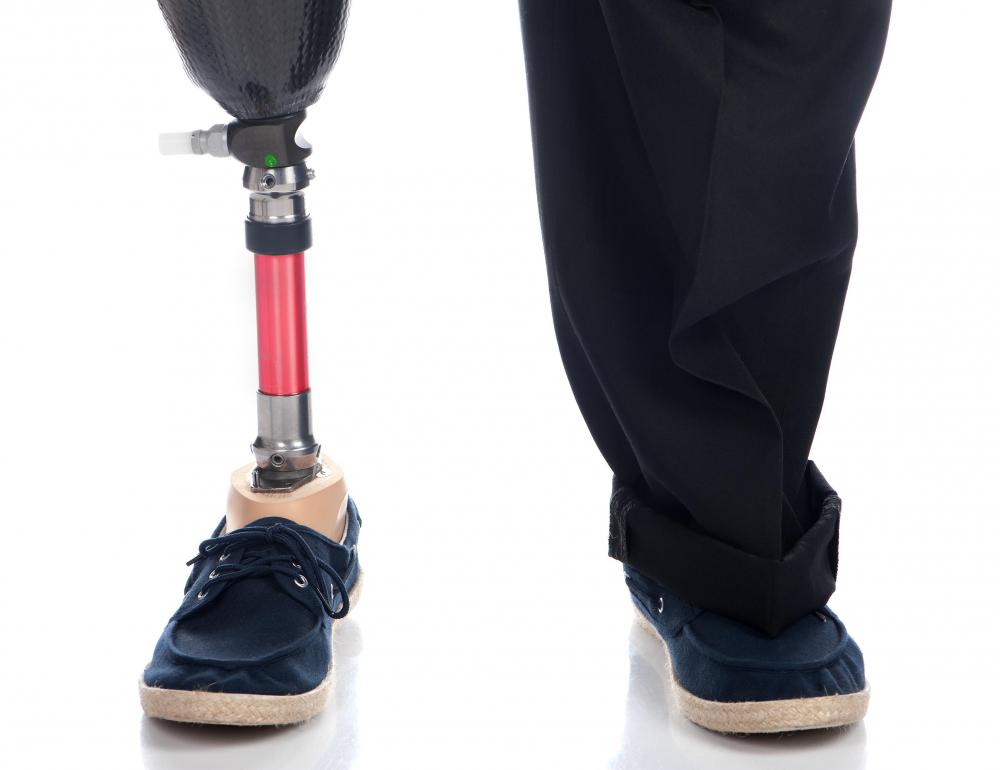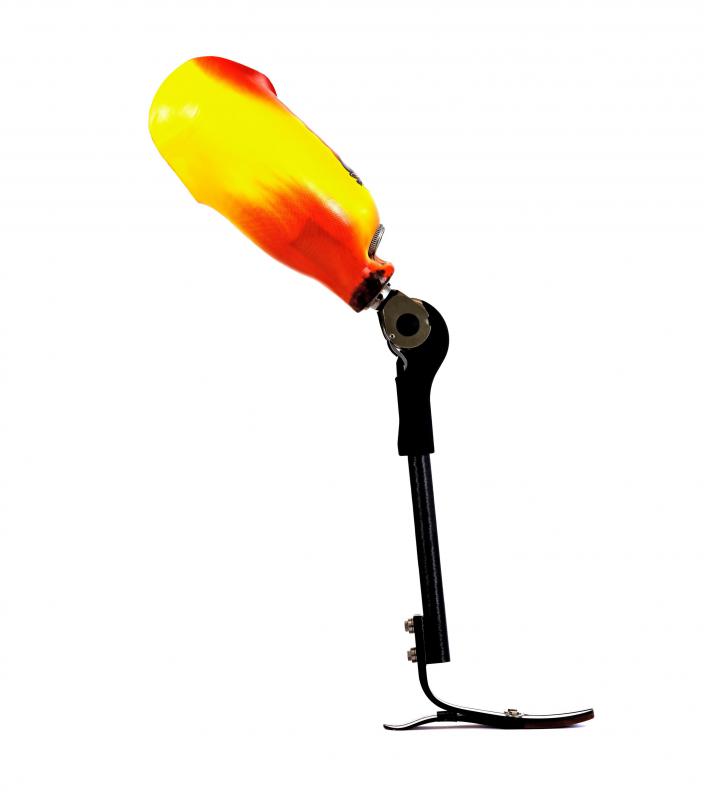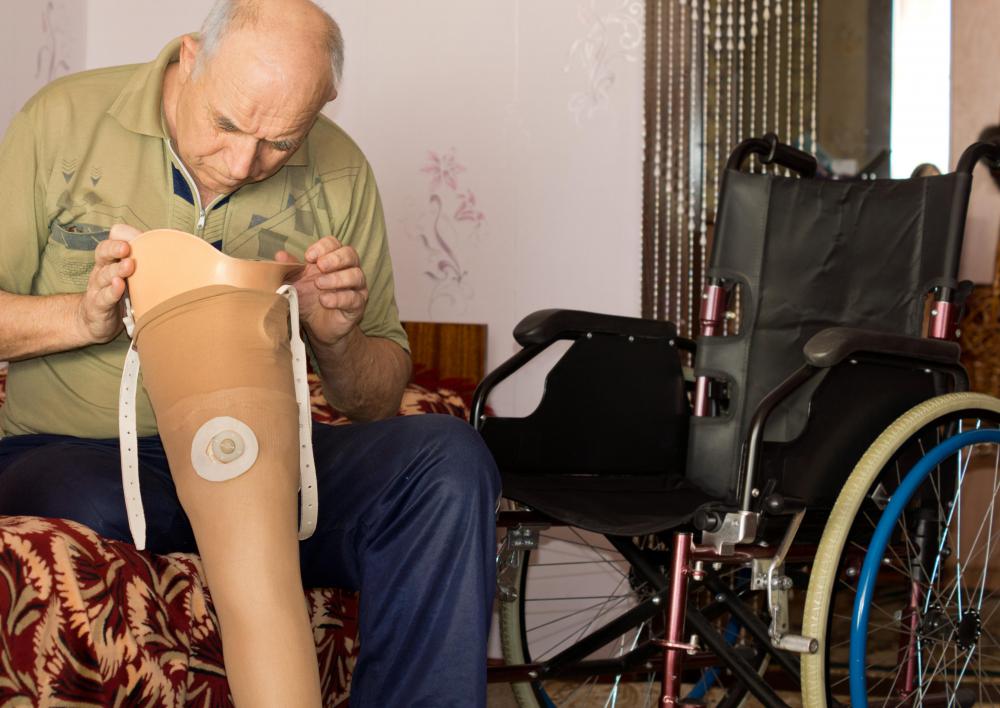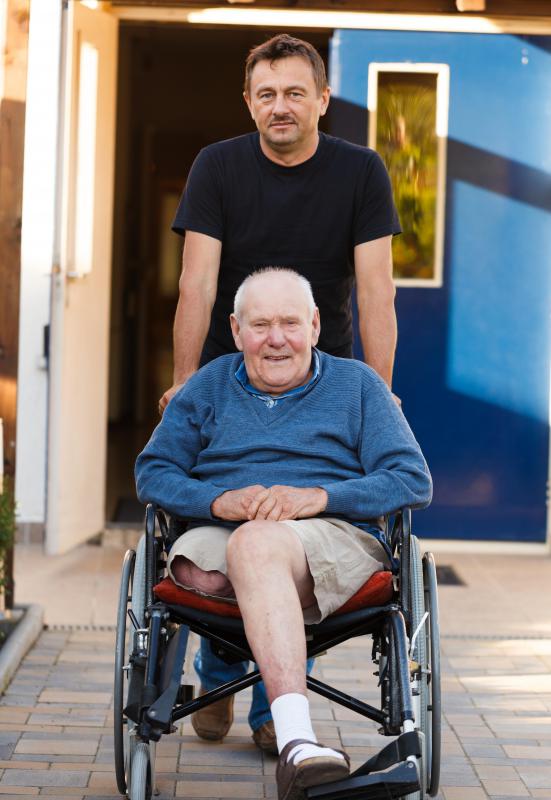At TheHealthBoard, we're committed to delivering accurate, trustworthy information. Our expert-authored content is rigorously fact-checked and sourced from credible authorities. Discover how we uphold the highest standards in providing you with reliable knowledge.
What is an Above the Knee Amputation?
An above the knee amputation generally refers to the removal of the leg from just above the knee down. This would leave only a small portion of the leg intact. This category includes any amputation done at any distance above the knee.
There are various reasons an above the knee amputation may be needed. Generally it is performed due to injury or illness, such as an infection. Amputation of any sort is typically reserved as a last resort when all other methods of treatment have failed. The main reasons why this procedure is performed is severe infection, restricted blood flow to the limb, and serious injury to the leg.

Aside from limited mobility, this procedure has serious potential side effects. These may include infection, bleeding, swelling of the remaining stump, reactions to anesthesia, phantom pain and sensation, and reduced range of motion in the affected hip. Those who require an amputation of the leg are typically advised to undergo physical therapy to get used to moving and functioning without the removed leg.

Two main options are available for those with an above the knee amputation to allow them to get around. The first and least costly of the two is a wheelchair or scooter. Patients who are wheelchair-bound generally gain increased upper arm strength and can learn to do everyday tasks while in a seated position. Certain modifications may be needed for the home and automobiles of these individuals.

The second option is a prosthetic leg. This refers to an artificial limb which is attached to the stump. Patients using one of these are often able to learn to walk again, sometimes using a cane. This option may not be available for all patients. Eligibility will often depend on the size and health of the remaining stump. Full healing from the original amputation is required before a prosthetic can be put in place.

When doing this procedure, doctors generally save as much of the leg as possible. Amputation is relatively rare, thanks to modern antibiotics and other treatments used in the treatment of illness, but there are some instances when one is necessary. Those with chronic illnesses or compromised immune systems are most at risk. For instance, patients with uncontrolled or severe diabetes may be more susceptible for amputation of the feet and legs.
AS FEATURED ON:
AS FEATURED ON:
















Discuss this Article
Post your comments